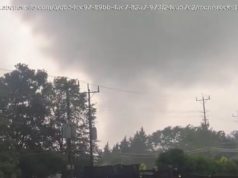Array
The United States is Earth’s punching bag for nasty weather.
Blame geography for the U.S. getting hit by stronger, costlier, more varied and frequent extreme weather than anywhere on the planet, several experts said. Two oceans, the Gulf of Mexico, the Rocky Mountains, jutting peninsulas like Florida, clashing storm fronts and the jet stream combine to naturally brew the nastiest of weather.
That’s only part of it. Nature dealt the United States a bad hand, but people have made it much worse by what, where and how we build, several experts told The Associated Press.
Then add climate change, and “buckle up. More extreme events are expected,” said Rick Spinrad, head of the National Oceanic and Atmospheric Administration.
Tornadoes. Hurricanes. Flash floods. Droughts. Wildfires. Blizzards. Ice storms. Nor’easters. Lake-effect snow. Heat waves. Severe thunderstorms. Hail. Lightning. Atmospheric rivers. Derechos. Dust storms. Monsoons. Bomb cyclones. And the dreaded polar vortex.
It starts with “where we are on the globe,” North Carolina state climatologist Kathie Dello said. “It’s truly a little bit … unlucky.”
China may have more people, and a large land area like the United States, but “they don’t have the same kind of clash of air masses as much as you do in the U.S. that is producing a lot of the severe weather,” said Susan Cutter, director of the Hazards Vulnerability and Resilience Institute at the University of South Carolina.
The U.S. is by far the king of tornadoes and other severe storms.
“It really starts with kind of two things. Number one is the Gulf of Mexico. And number two is elevated terrain to the west,” said Victor Gensini, a Northern Illinois University meteorology professor.
Look at Friday’s deadly weather, and watch out for the next week to see it in action: Dry air from the West goes up over the Rockies and crashes into warm, moist air from the Gulf of Mexico, and it’s all brought together along a stormy jet stream.
In the West, it’s a drumbeat of atmospheric rivers.






